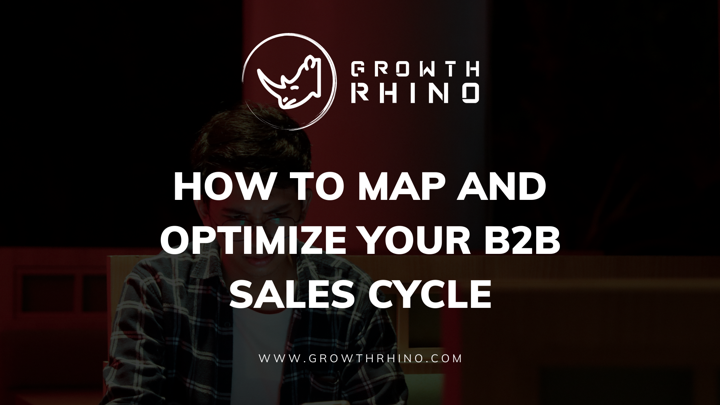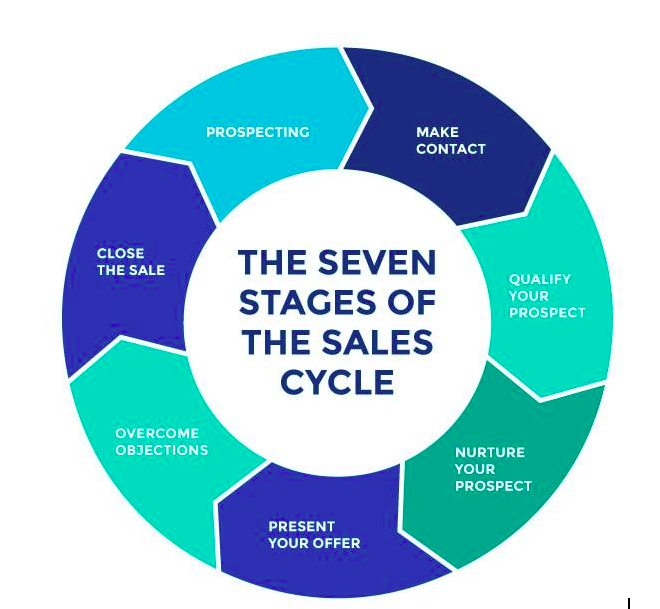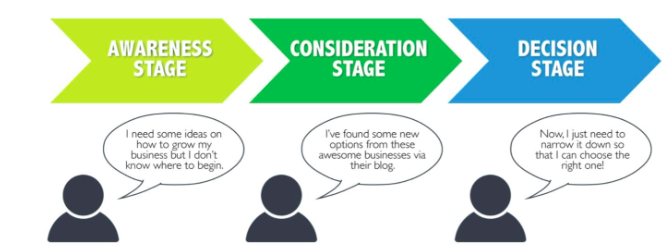
In order to be a high-performing B2B sales company, you need an excellent sales strategy. A great way to improve on your sales strategy is to map your sales process so that you know exactly how you need to optimize your sales cycles. Doing so will lead directly to higher sales and increased revenue.
What Is The Sales Process and Why Is It Important To Optimize It?
The B2B sales process refers to the steps that a salesperson takes with a prospect along the B2B sales pipeline, moving further and further until they become a customer. It’s a cyclical process that begins again every time it’s completed. The sales cycle refers to the amount of time that it takes for a prospect to be taken through the steps to become a customer, while the sales process refers to the steps themselves.
Mapping your B2B sales process means that any member of your sales team can easily see and follow the action steps available, which is a huge boost in B2B sales enablement, and you can also spot inefficiencies and improve upon them.
Optimizing the sales process gives you benefits like:
- Higher conversion rates – this is because your sales reps know exactly what they have to do and what their next steps are. Your sales team is more knowledgeable and more efficient.
- High-quality prospects – when your sales team is more knowledgeable and efficient, they are empowered to recognize and nurture high-quality leads that are likely to become customers.
- Shorter sales cycle – in turn, these high-quality leads translate to shorter sales cycles because the prospects are a good fit. This saves time and increases higher chances of closing.
- Increased revenue – all of this translates to increased revenue as the conversion rate increases and time to turn a prospect into a customer decreases.
How To Map Your B2B Sales Process
Mapping out your sales process is simply putting your process into writing. Generally speaking, most sales processes have 6 stages.
- Prospecting – finding potential customers and figuring out whether or not they need or can benefit from what you’re selling, and whether or not they can buy it.
- Connecting and qualifying – beginning and building on your relationship with the prospect, as well as continuing to evaluate whether or not they need what you’re offering and can afford it.
- Presenting – communicating the value of what you’re selling, especially in the prospect’s respective business.
- Addressing concerns – listening to and addressing each of the client’s concerns carefully.
- Closing/selling – advancing the sales process until you make a sale. It may involve things like sending the prospect a quote or proposal, negotiating, or obtaining decision makers’ buy-ins.
Following up – after-sales care. Happy customers are excellent candidates for any other products that you might offer, repeat business, and even referrals.

Your B2B sales team can help you by noting down what the steps in their specific sales processes are, as the exact steps they each take can differ. Some small thing that someone does can prove to be the key that you need in order to optimize your sales process.
The top performers in your sales team are especially likely to be able to offer some wisdom like this, which can help other sales reps to learn and adopt those practices.
How To Improve Your B2B Sales Process
Carefully mapping your B2B sales process out is only half the battle. The other half is improving upon it. Here are some ways that you can do so.
Having a Clear Strategy
You won’t be able to optimize your sales process until you have a clear vision and the strategy on how to achieve it. You and the other decision-makers in your company must sit down and create your sales strategy together, which will act as the backbone for your sales process.
Defining Your Stages
The specific steps that are taken in the sales process must be clearly defined and categorized into the different stages of the sales process. That way, the sales process (which is usually informal) can be formally understood, documented, and taught.
Knowing and Aligning With Your Buyer’s Journey
Knowing your buyer’s journey means that you can identify their decision points and how you can best capitalize on them by making changes to your sales process.

Defining and Monitoring Kpis
Defining your sales process means that you can measure pretty much every single facet of your sales efforts via KPIs. You can measure things like customer lifetime value, sales cycle times, close rates, and more. These give you a quantitative way to identify which areas are problematic and how well each stage of your sales process is doing.
Educating and Working With Your Sales Team
You should ensure that your sales team is educated on the sales process once it’s been mapped out so that they can stay up to date and even suggest additions or revisions. It’s key to keep your sales team in the loop so that they can thoroughly know, understand, and use the process.
Align Marketing and Sales
The right marketing leads to sales. Your marketing and sales departments must work together so that they can identify points in the sales process that can be optimized.
Collect Customer Data
And finally, don’t guess what the best way to sell is. Collect data on your prospects as well as your customers. This way, you can understand things like which communication methods and products work best with which customers or how to ask better qualifying questions. This data is invaluable to coming up with ideas on how to improve your sales process.
Boost your sales leads to make the most out of your new and improved sales process.
Your B2B sales process can always be improved upon, and mapping it makes it far easier to know where exactly changes need to be made. The more time and effort that you put into improving your sales process, the better your results (and revenue) will be.
